Location Italy Criteria iv, vi UNESCO World Heritage Site inscription 2004 | Type Cultural Reference 1026 | |
 | ||
UNESCO region Europe and North America Similar Monte Amiata, Valdichiana, Abbey of Sant'Antimo, Maremma, Cappella della Madonna | ||
Val d orcia siena tuscany
The Val d’Orcia, or Valdorcia, is a region of Tuscany, central Italy, which extends from the hills south of Siena to Monte Amiata. Its gentle, cultivated hills are occasionally broken by gullies and by picturesque towns and villages such as Pienza (rebuilt as an “ideal town” in the 15th century under the patronage of Pope Pius II), Radicofani (home to the notorious brigand-hero Ghino di Tacco) and Montalcino (the Brunello di Montalcino is counted among the most prestigious of Italian wines). Its landscape has been depicted in works of art from Renaissance painting to modern photography.
Contents
- Val d orcia siena tuscany
- World Heritage Site
- Orcia DOC
- Historic railways heritage site
- Film locations
- In popular culture
- References
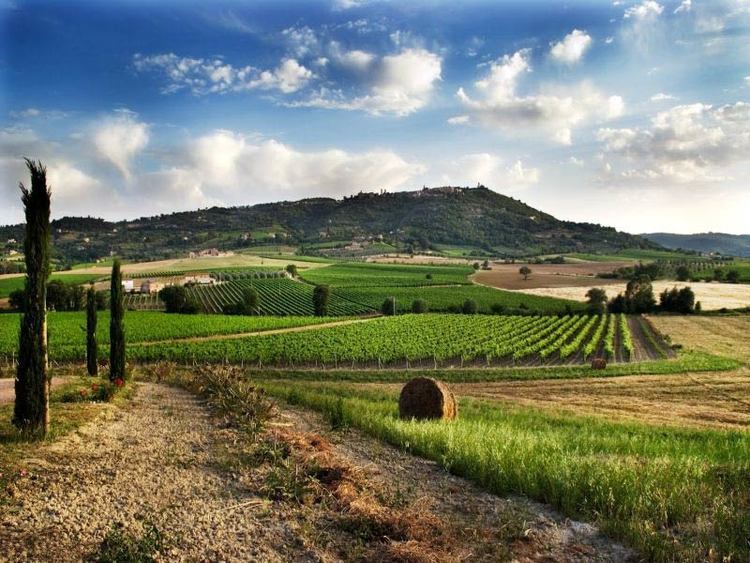
World Heritage Site
In 2004 the Val d’Orcia was added to the UNESCO list of World Heritage Sites under these criteria:
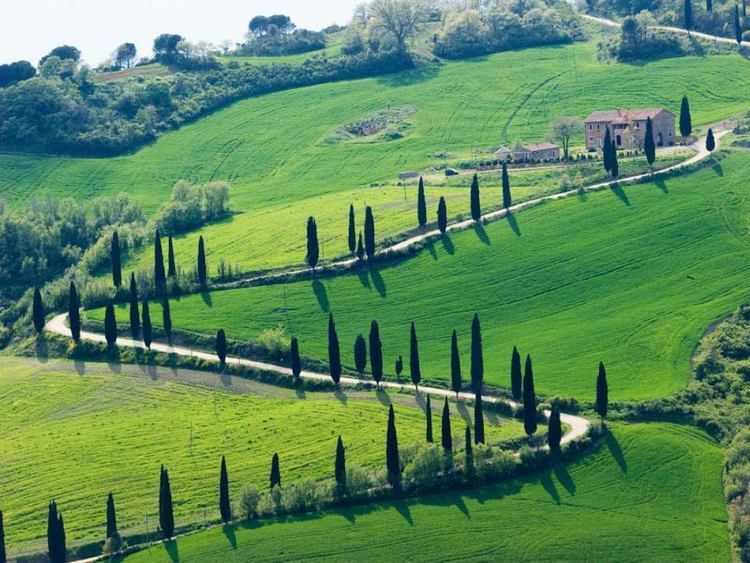
Orcia DOC
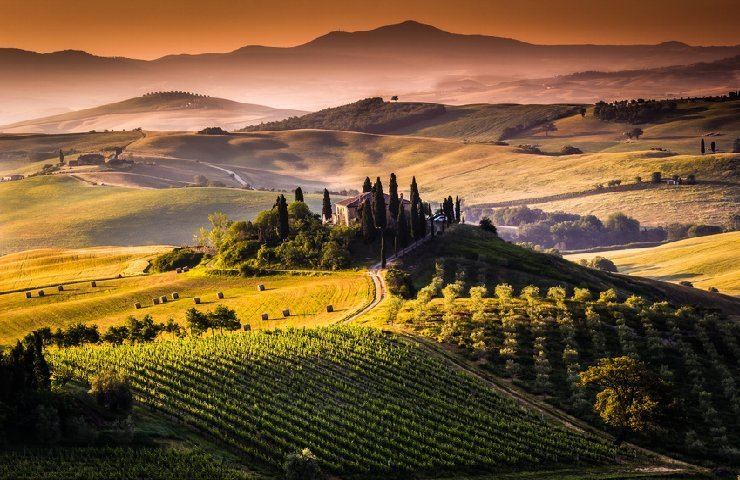
Within the Val d'Orcia is a strip of land following the Orcia river between the DOCG zones of Brunello di Montalcino and Vino Nobile di Montepulciano. Here the Sangiovese and Trebbiano-based wines are produced under the Orcia Denominazione di origine controllata (DOC) status. The DOC red wine is composed of at least 60% Sangiovese with other local varieties, such as Abrusco, permitted to fill in the remainder of the blend. The dry white wine and Vin Santo style DOC wines are composed of at least 50% Trebbiano with other local varieties filling out the rest of the blend. All grapes destined for DOC wine production are limited to a maximum harvest yield of 10 tonnes/hectare with the finished wines required to have a minimum alcohol level of at least 12%.
Historic railways heritage site
Val d'Orcia is crossed by a nineteenth-century railway whose tracks, stations and tunnels have been restored to working order. The scenic line connects the small town of Asciano with Monte Antico for tourism purposes, using historic steam engines and carriages.
Film locations
Val d'Orcia has been a location in many well-known films, including:
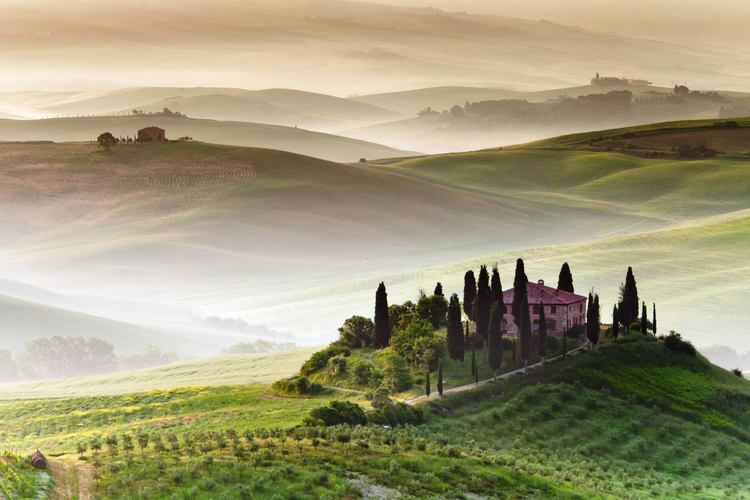
In popular culture
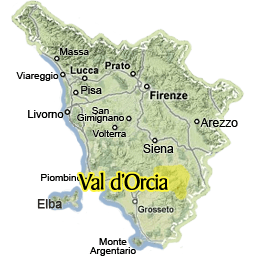
The book War in Val d'Orcia by Iris Origo is a first-hand account of the World War II events of 1943–44 in the region, written as a diary in English.
